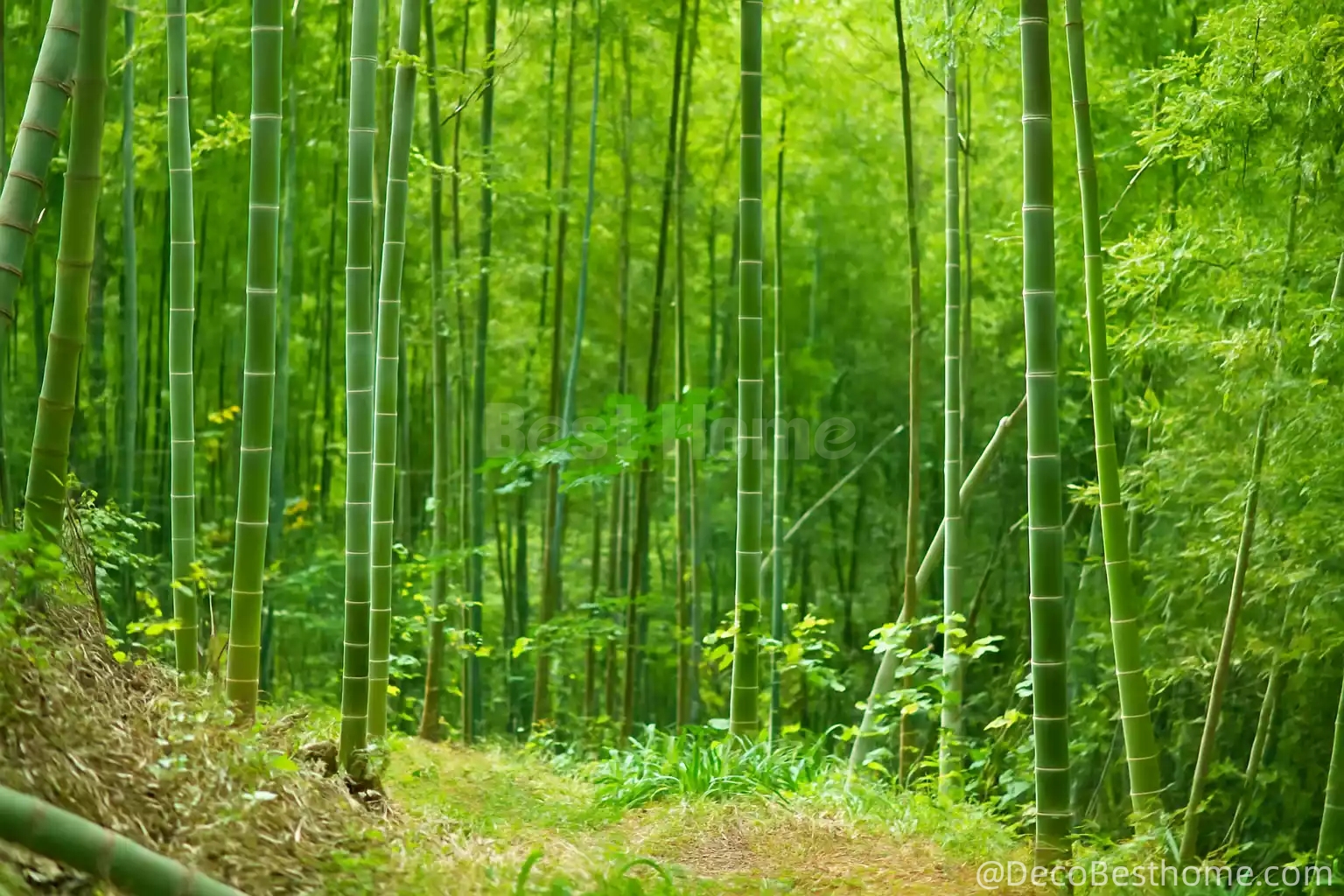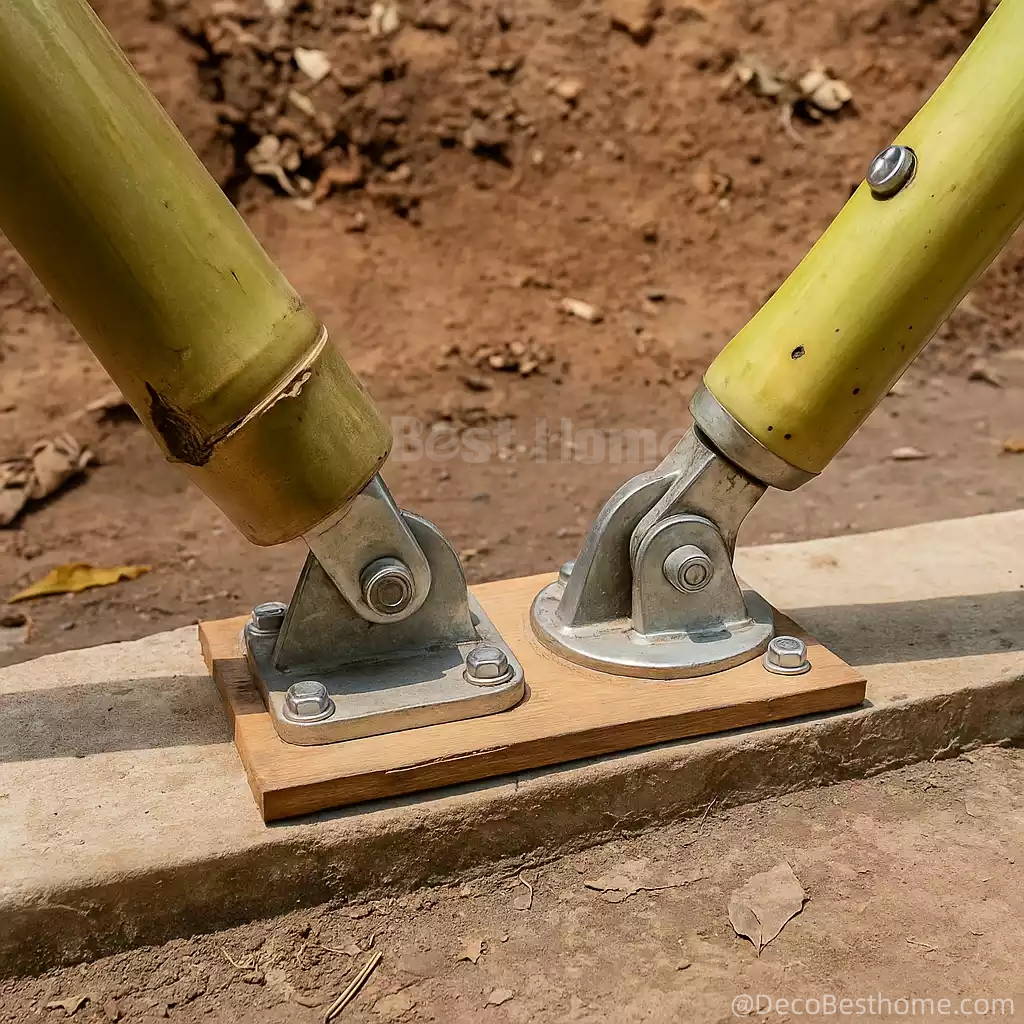The characteristics of MOSO Bamboo and Its Wide Application In Architecture and Decoration

MOSO Bamboo (scientific name: Phyllostachys edulis) is a widely distributed bamboo species in southern China. Due to its excellent physical properties, rapid growth, and environmental characteristics, MOSO bamboo is widely used in fields such as construction, decoration, and furniture manufacturing. The following is an analysis of its core characteristics and applicability:
The core characteristics of MOSO bamboo
1>. Excellent physical and mechanical properties
-High density: The density of mature bamboo can reach 0.8-0.9 g/cm ³, which is close to hardwood (such as oak with a density of about 0.75 g/cm ³), giving it high hardness and compressive strength.
-High intensity:
-Tensile strength: The longitudinal tensile strength reaches 180-220 MPa, exceeding many steels (such as ordinary carbon steel with a tensile strength of about 370 MPa, but bamboo has a higher unit mass strength).

-Compressive strength: The longitudinal compressive strength is about 70-90 MPa, which is close to that of concrete (ordinary concrete has a compressive strength of about 20-40 MPa).
-Flexibility: The layered structure of MOSO bamboo fiber combines toughness and elasticity, allowing it to withstand certain deformations without easily breaking.
2>. Rapid Growth and Renewability of MOSO Bamboo
-Short growth cycle: MOSO Bamboo takes 3-5 years to mature, while hardwood takes decades, making the resource sustainable.
-Strong carbon sequestration capacity: The carbon sequestration efficiency of bamboo forests is 2-3 times that of ordinary forests, which is in line with the trend of low-carbon environmental protection.
3>. Natural texture and aesthetics
-The surface texture of bamboo is clear and the color is elegant (light yellow to golden yellow), which can be presented in diverse styles through carbonization, dyeing and other processes, suitable for modern minimalist or natural style decoration.
4>. Weather resistance and stability
-Moisture and anti-corrosion: After high-temperature carbonization or anti-corrosion treatment, the moisture resistance and insect resistance are significantly improved, making it suitable for humid environments such as bathrooms and kitchens.
-Low shrinkage rate: The dry shrinkage and wet swelling rate of bamboo is lower than that of ordinary wood, and the risk of deformation is relatively small.
The application advantages of MOSO namboo In construction and decoration

1>. As a structural material
-MOSO Bamboo laminated timber: made into large-sized beams and columns through bonding and laminating techniques, used for lightweight buildings such as bamboo houses and pavilions, with strength that can replace some steel.
-Scaffolding: Traditional MOSO bamboo scaffolding is still widely used in southern China, thanks to the high strength and lightweight of bamboo.
2>. Interior decoration
-MOSO Bamboo flooring:
-High hardness (Janka hardness is about 1200-1400 lbf, higher than oak's about 1300 lbf), wear-resistant and scratch resistant.
-Good thermal conductivity, suitable for underfloor heating systems.
-Wall and ceiling:
-MOSO Bamboo splicing or MOSO bamboo weaving techniques can create a natural atmosphere, with sound-absorbing and heat-insulating properties.
-Customized furniture: MOSO Bamboo can be processed into tables, chairs, and cabinets, combining aesthetics and durability.
3>. Environmental Protection and Economic Benefits
-Low carbon cost: Bamboo is priced lower than high-quality hardwood and has low processing energy consumption.
-Certification advantages: MOSO Bamboo products are easy to obtain green building certification (such as LEED), which enhances project sustainability ratings.
Limitations and Solutions of Bamboo Application
1>. Natural defects:
-MOSO Bamboo is hollow and jointed, and it needs to be cut and reassembled (such as MOSO bamboo laminated timber) to improve homogeneity and strength.
2>. Anti corrosion requirements:
-Untreated MOSO bamboo is prone to mold and needs to be protected by carbonization, soaking in boric acid, or applying environmentally friendly paint.
3>. Connection technology:
-The traditional binding method lacks strength, and modern MOSO bamboo buildings require the use of metal connectors or bonding techniques.

4>、Typical case
-Architecture: The Green School in Bali uses MOSO bamboo to construct a large dome structure.
-Decorative and constructive MOSO bamboo poles: widely popular in the global markets.
-Innovative material: MOSO Bamboo fiber composite material (bamboo steel) is used for outdoor walkways and bridges.
Summary
MOSO Bamboo has become an ideal substitute for traditional wood due to its high strength, rapid regeneration, and environmental friendliness. Through modern processing techniques such as lamination and anti-corrosion treatment, its application scope has expanded from traditional woven fabrics to high-end construction and interior decoration fields, especially in line with the global demand for sustainable development.
